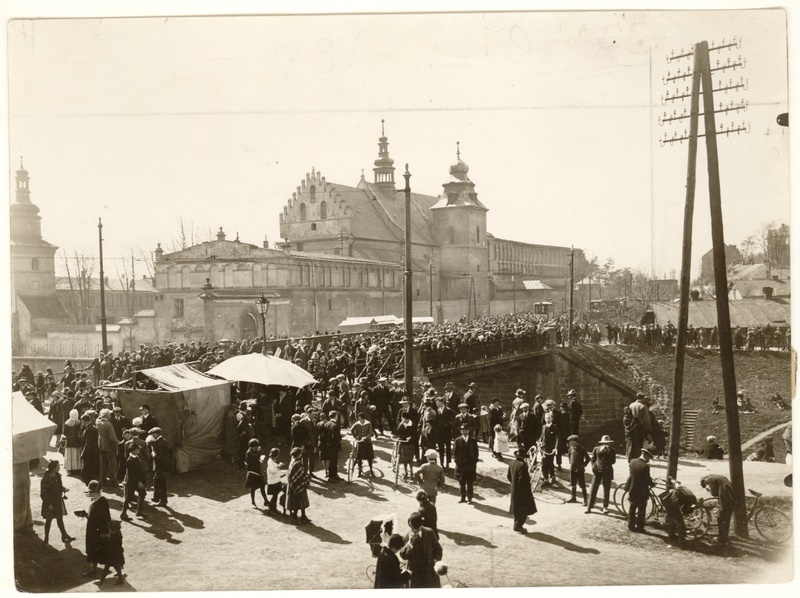 Emaus
Emaus
Odbywający się w drugi dzień Wielkanocy odpust Emaus zawdzięcza swą nazwę ewangelijnemu miasteczku, do którego udał się Jezus po zmartwychwstaniu. Niektórzy historycy i etnografowie dopatrują się rodowodu Emaus, podobnie jak podgórskiej Rękawki, w tradycjach pogańskich, inni zaś tłumaczą go potrzebą ruchu u ludzi przejedzonych po świętach. W dzień odpustu okolice klasztoru Norbertanek zapełniały się straganami ze słodyczami, zabawkami i innymi niezbędnymi przy takich okazjach akcesoriami. Jeszcze pod koniec XIX stulecia „obowiązkowym” zakupem na Emausie była siekierka i gliniany dzwonek. Oprócz śmigusowo-dyngusowego polewania wodą namiętnie strzelano z korkowców i odpalano petardy. W Emausach brała udział głównie młodzież, żakowie i podmiejski ludek.
Dawno temu w kościele Salwatora znajdował się cenny krucyfiks przysłany pierwszemu księciu chrześcijańskiemu z Moraw. Chrystus z krucyfiksu został ubrany w cenne szaty, na głowę włożono mu koronę, a na stopy złote buciki wysadzane drogimi kamieniami. Pewnego razu ubogi grajek, klęknąwszy przed krucyfiksem, zaczął grać na skrzypcach. Chrystus, wzruszony jego przepiękna gra, ale także wielka bieda, zsunął z nogi jeden z bucików i podarował muzykowi. Jednak wierni posadzili biedaka o kradzież i odebrawszy mu cenny trzewik, z powrotem założyli na stopę Chrystusa. Wtedy historia się powtórzyła, tym razem na oczach tłumu, ale nikt już nie śmiał odebrać biednemu skrzypkowi podarku.